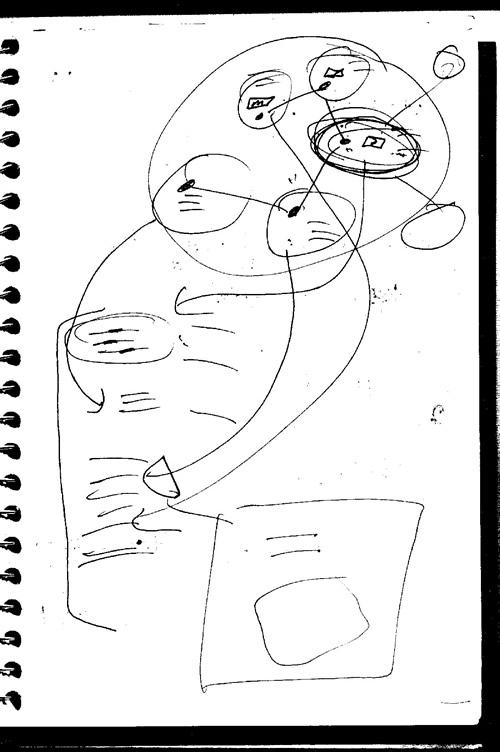
| Team Member | Role | Core Competency |
| Mary Hodder | General Manager and VP, US Operations in charge of: |
-Domain expertise -Content expertise -IP expertise -Filmmaker -Party-planner and chef extraoridnaire |
| Jeff Towle | Chief Plumbing Officer, in charge of: -Software development -Web-monkeying -Internal technologies (Wiki-wonkeying) |
-Domain proficiency -Software, hardware expertise -Design guru in disguise -Long walks on the beach |
| Dan Perkel | Sergeant-at-arms, in charge of: |
-Domain ignorance -Experience design -Drawing -Deep football understanding, insight, and wisdom |
Problem statement
It has been estimated (by the NY Times, and other blog counting services) that
there are 3 million blogs. Twenty percent go dead after about two months while
more are started. Of those that remain and continue to be added to, the content,
for various reasons, can be very useful. This kind of information, provided
free on the internet by bloggers, can be useful if the nuggets of value can
be extracted and understood. Creating an interface to make explicit these conversations
is key to making what people say available. Most users of the internet have
not yet found these conversations accessible, though many people have expressed
interest. Our project proposes to create a useable, useful, and enjoyable interface
for those who are unfamiliar with either blog terminology (the use of which
might aid in searching for them) or where to find blog content that is trustworthy
and useful, and how to see the conversations and linking that occur across blogs
that concentrate on particular types of information or discussions.
Characteristics of primary users and their goals
Primary users include:
-blog writers for the purposes of seeing what others are linking to
and saying in response to their writings;
-writers from other formats including traditional media, who might
want to see how other web writers view traditional media and respond to specific
work;
-advertising purchasers on web media, in order to place relevant advertisements
with writing that is appropriate and useful for both writers and readers;
-marketing/brand managers wishing to see and participate in the conversations,
to understand what people say about them.
How we will find participants
We will use participants we know, as well as contact bloggers online and readers
of online content, via email and personal requests online, to participate in
user studies.
Initial suggested
design, with justification
One of our major design goals is to provide blog readers with a tool that will
allow them to follow a conversation that takes place over the course of days
or weeks on many different sites. Current blog readers can follow these conversations
because they are active participants in the conversations and can follow the
conversation as it occurs. However, once a blog entry is no longer the current
topic of debate, the conversation becomes lost in the archives. We would like
our tool to effectively display the relationships between entries and topics
amongst bloggers to anyone who desires this information.
One method that we have discussed would involve a site that aggregates blog data and allows searching by keyword. The results would be displayed in a keyword-in-context format; however, we want to avoid a list of discrete entry, instead showing a thread-like display of the entire conversation. We are interested in a design that combines a search interface with a visual representation of blog conversations. We believe that a text-only representation of search results and blog linkages will hide the complexities of these conversations as well as conceal valuable data. Additionally, there will be opportunities for other features, such as dynamic filters, zooming, and so forth, pending early testing and prototypes.
An early concept drawing by Mary Hodder (sketched on a small pad of paper in a coffee shop):
